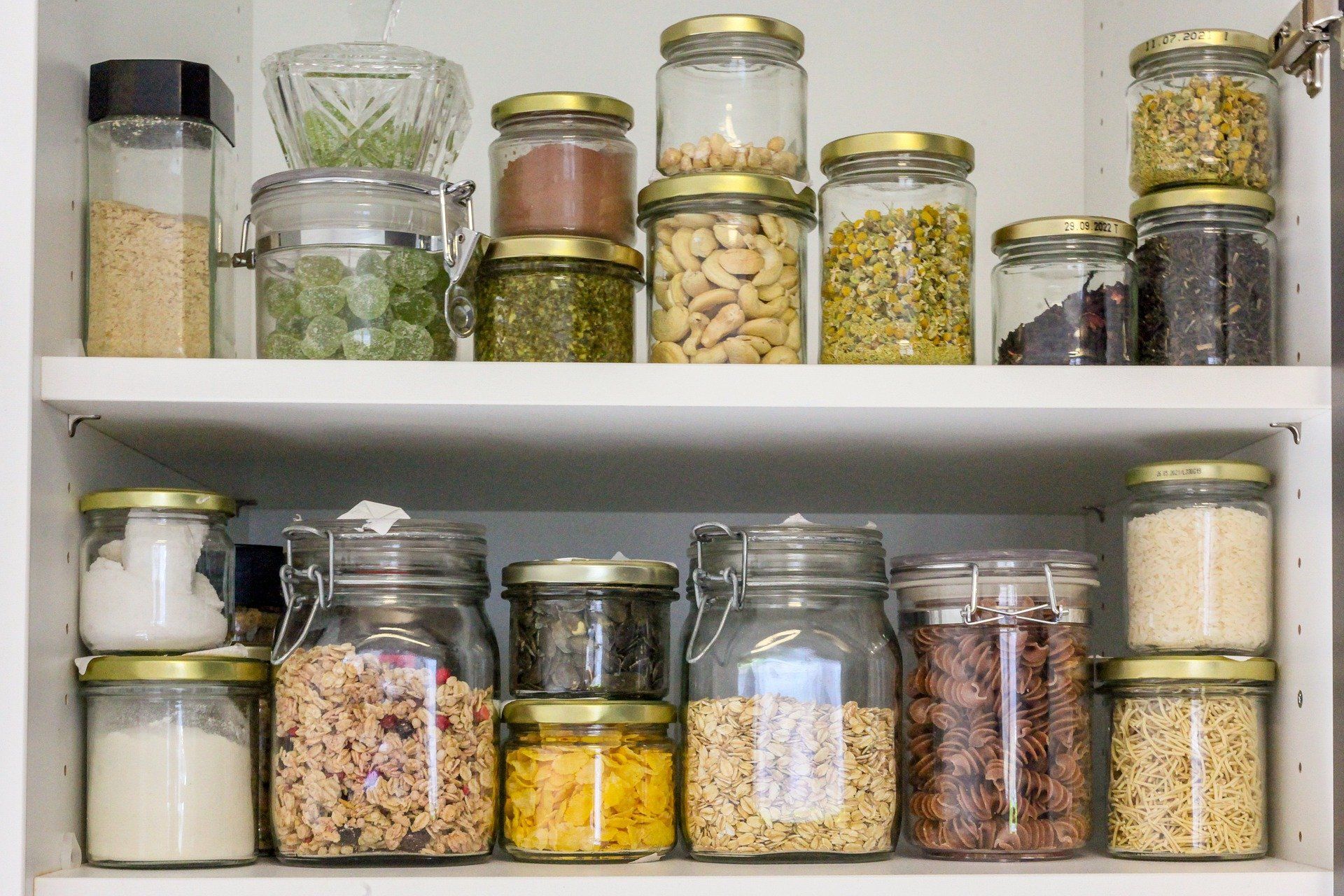Purging Your Pantry
Look for new ways to store your food in your pantry that make it easier to access what you need and in the serving sizes that are healthier for you.

If you’ve chosen to set a goal for the new year in the area of your diet, then January can be a great time to purge in your pantry! A resolution to eat healthier is more successful when you’ve removed or reduced the candy and junk food that you typically turn to when you need an emotional boost. When the weather turns colder, you may also find that digging deeper into your cupboards reveals evidence of little critters that have moved into your home!
Start your kitchen reduction by taking everything out of your cupboards. Look to remove expired items. Notice which items you never used and assess why you didn’t use them. Perhaps you didn’t have all the necessary ingredients, it no longer appealed to you or your family or it took too long to prepare, whatever the reason, make a note to avoid such purchases again.
Keep an eye out for any insects or mouse residue. If you find any evidence of bugs or mice, you may want to switch over to plastic or glass storage solutions to protect your food. If you need to swap containers, an easy way to remind yourself of serving sizes or calorie counts is to cut and tape the product labels onto your storage containers or note those details on customized labels. By stowing bagged foods into a sealed container, you can keep them fresher longer and you can slide the nutrition panel or flap with expiration date into the container beside the bag, keeping it clean and visible.
If you are removing things from your diet that you have in stock and they aren’t close to expiring, you can box them up to donate to your local food bank. Check to see if they have a suggested list of foods to donate and that what you have is acceptable.
If you have food that is just about to expire, set aside an area for the items you want to use first and add them to your meal plan. Keep your healthier eating plan in mind and don’t force yourself to eat food that isn’t within your goal just to be rid of it and not waste money. Prioritize your health first and don’t let the poor choices of last year impact your decisions for the future.
Some people choose to organize like items with like items in the kitchen. For example, you might want to place all the canned goods together. But if you stack them all in one cupboard and you can no longer see the items in the back, you may find that they’ll go unused and will expire. Were most of the items you just purged located in the back of a cabinet? Can you use a tiered shelf to see what is in the back row or a lazy susan to rotate your stock? See if storing boxes sideways or on their sides will allow you to see more of what’s in your cupboard or cabinet.
Other people choose to organize items according to meals or ingredients. You may wish to store your taco seasonings, with your unopened jars of salsa, taco shells, and cans of refried beans. Maybe keeping all of your tomato based products together makes more sense to you and therefore the jars of salsa fit right alongside your tomato paste, puree and stewed tomatoes. Set up your kitchen in a way that makes sense to you and your family.
Purchase or measure out food according to serving sizes or calorie counts and organize your single serving items in baskets or bins, so you can easily grab what you need and see when your stock is depleted. Put healthier options in the front and make it easier to choose what food is best for you. These tips work well if you are someone who packs a meal for work or a day out volunteering. Use baskets or bins in your refrigerator or freezer for quick and easy access to those smaller items you need to grab.
As you sort and purge in your pantry, take time to evaluate your food and see if there are small tweaks you can make to have a healthier impact on your diet. Make a note to next time buy the same foods with less sodium or fat and fewer carbs or calories. Examine the number of servings and make a plan to measure, weigh, or count the foods you really tend to go overboard eating. For example, the number of chips in a serving can vary greatly across brands and according to the size of the chip, so counting potato, corn and sweet potato chips according to serving can make a big difference from eating them by the handful! Purchase extra measuring cups, spoons, or scoops to help you reach and maintain your goals. You may find it’s easier to stick with a single serving of ice cream if you measure it out according to the packaging, which again differs in size and calorie count across brands. Eat it straight from the measuring cup if you want to do so. The measuring cup will be full compared to the bowl that you’ll want to add another scoop to. You’ll find that you can still enjoy eating the foods you love in those recommended serving sizes and you’ll be more aware of when you’re eating too much.
Look for new ways to store your food in your pantry that make it easier to access what you need and in the serving sizes that are healthier for you. You’ll not only have a better organized pantry, but a healthier stock of food from which to choose!











